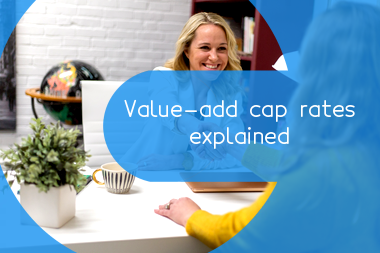Cap rates for value-add deals may be lower than stabilized deals because of the potential for increased income and property value through improvements and upgrades made by the investor. In a value-add deal, the property may be underperforming and require additional investment to increase its revenue and net operating income (NOI). As a result, the potential exists for higher income and property value, which translates into a lower cap rate.
In contrast, a stabilized deal typically has consistent occupancy and income, and therefore, fewer opportunities for significant income or value increases. Thus, the cap rate for a stabilized deal may be higher as the property is perceived as being lower risk and more predictable.
Investors who are looking for higher returns may be more drawn to value-add deals with lower cap rates, as the potential upside of improving the property and increasing income may outweigh the perceived higher risk. Additionally, investors may be willing to accept a lower initial yield for a property with significant upside potential.
What is a cap rate, anyway?
A cap rate, short for capitalization rate, is a ratio used to determine the value of a real estate property investment. It is calculated by dividing the property's net operating income (NOI) by its current market value. The resulting percentage reflects the expected return on the property investment, or how quickly the investor can expect to recoup their investment. The cap rate is typically used in commercial property transactions and can be seen as a measure of risk, indicating how risky an investment may be. A higher cap rate usually indicates a riskier investment with higher potential returns, while a lower cap rate signifies a safer investment with potentially lower returns.
Why do unstabilized assets sometimes have lower cap rates than stabilized ones?
Unstabilized assets are those that have not yet reached their full potential in terms of occupancy, leasing, or rent rates. They may have a higher risk associated with them, such as tenant turnover, vacancies, construction, or repositioning. This uncertainty of income streams and property value lowers investor confidence and increases the perceived risk. As a result, buyers demand a higher rate of return or a higher cap rate to offset the additional risk.
On the other hand, stabilized assets have an established and predictable income stream that reflects stable occupancy, leasing, and rent rates. Investors, therefore, perceive them as safe investments with lower risk, which results in a lower expected rate of return or lower cap rate. Additionally, stabilized assets may be easier to finance, sell, or trade, which further lowers the perceived risk and cap rates. Therefore, the cap rates of unstabilized assets may be higher than those of stabilized assets.
Final thoughts
Cap rates for value-add deals tend to be higher compared to stabilized properties. This is because there is more risk involved in these types of deals since the property is not yet fully optimized. However, as the property is improved and stabilized, the cap rate can decrease, resulting in a higher property value and potential for increased returns for investors. It is important for investors to carefully analyze the current market conditions, the specific property's potential, and the level of risk before making investment decisions. Ultimately, a thorough due diligence process and a well-executed business plan can lead to successful value-add deals with attractive cap rates.
Just one more thing: if you liked the article, please like us on social media and share this article with friends.



